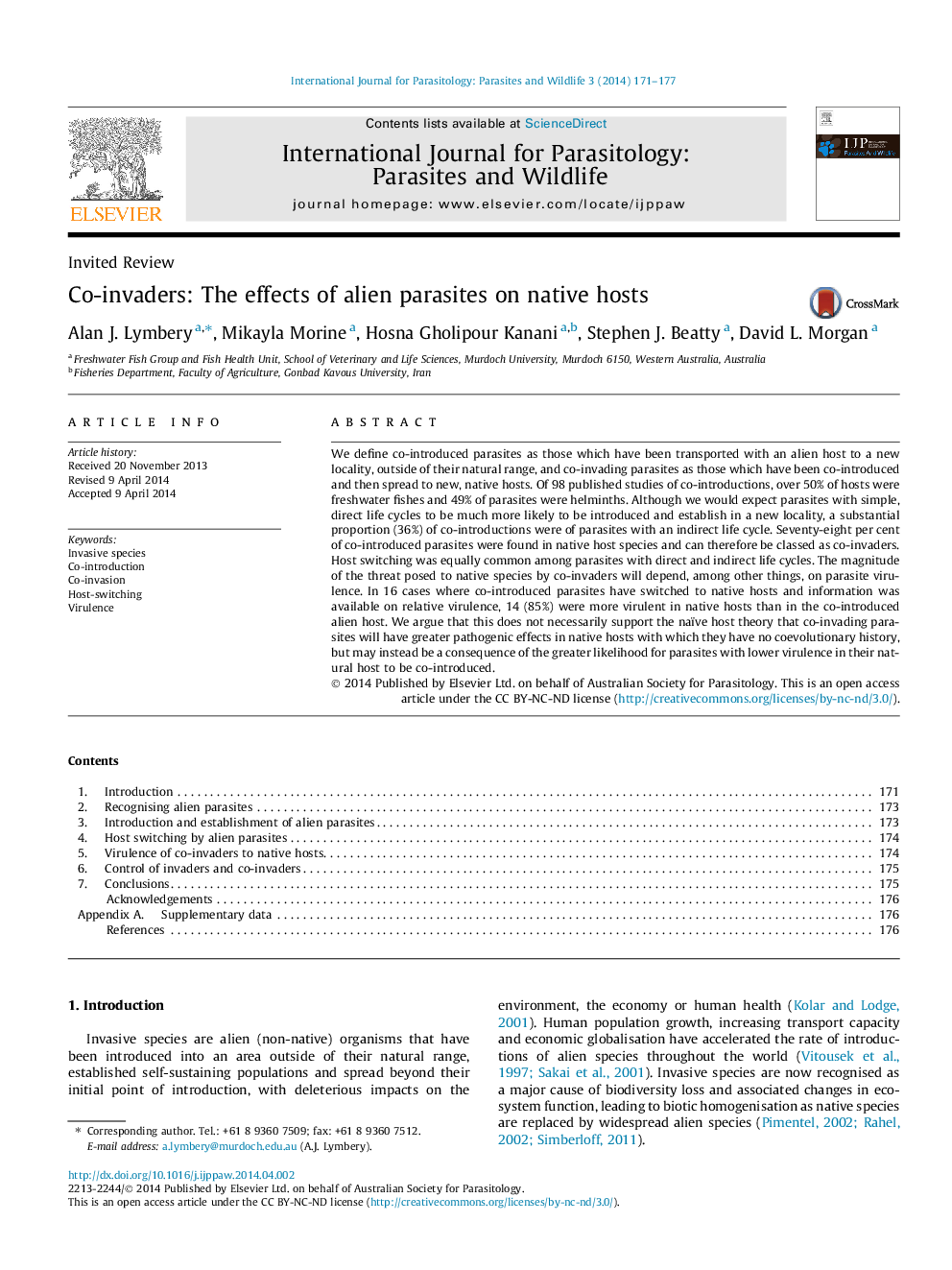| کد مقاله | کد نشریه | سال انتشار | مقاله انگلیسی | نسخه تمام متن |
|---|---|---|---|---|
| 2055326 | 1075739 | 2014 | 7 صفحه PDF | دانلود رایگان |
• Co-introduced parasites are transported to a new area with an alien host.
• Co-invading parasites are those which are co-introduced and switch from alien to native hosts.
• Co-invading parasites with indirect life cycles are reported as frequently as those with direct life cycles.
• Co-invaders are usually more virulent in native hosts than in alien hosts.
We define co-introduced parasites as those which have been transported with an alien host to a new locality, outside of their natural range, and co-invading parasites as those which have been co-introduced and then spread to new, native hosts. Of 98 published studies of co-introductions, over 50% of hosts were freshwater fishes and 49% of parasites were helminths. Although we would expect parasites with simple, direct life cycles to be much more likely to be introduced and establish in a new locality, a substantial proportion (36%) of co-introductions were of parasites with an indirect life cycle. Seventy-eight per cent of co-introduced parasites were found in native host species and can therefore be classed as co-invaders. Host switching was equally common among parasites with direct and indirect life cycles. The magnitude of the threat posed to native species by co-invaders will depend, among other things, on parasite virulence. In 16 cases where co-introduced parasites have switched to native hosts and information was available on relative virulence, 14 (85%) were more virulent in native hosts than in the co-introduced alien host. We argue that this does not necessarily support the naïve host theory that co-invading parasites will have greater pathogenic effects in native hosts with which they have no coevolutionary history, but may instead be a consequence of the greater likelihood for parasites with lower virulence in their natural host to be co-introduced.
Figure optionsDownload as PowerPoint slide
Journal: International Journal for Parasitology: Parasites and Wildlife - Volume 3, Issue 2, August 2014, Pages 171–177
